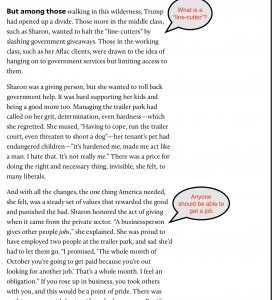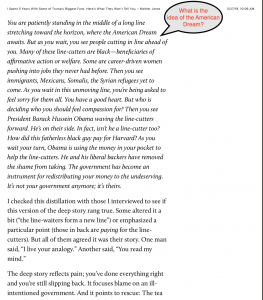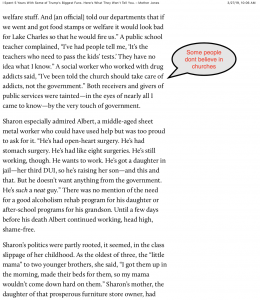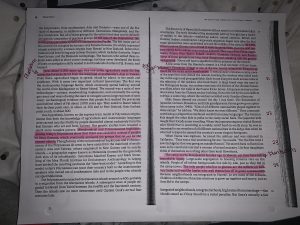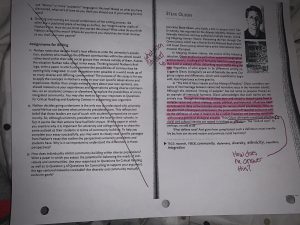Alivia Shattuck
Professor Drown
English 123
29 April 2019
What does it take to create an anti-racism movement?
In this paper, I am going to examine the social habits of humans and how they are connected to weak ties and strong ties in order to understand how to create an anti-racism movement here at UNE. Coming from a city where 26.43% of people are colored, made an impact on me as I came to UNE.
During my first year at UNE, I have only been in two classes with people of color. Not only is the majority of UNE being white, but people of color come to this school they feel “alone”. When it comes to race in the classroom, people may interpret their actions and words into something that white people believe is rude. There are different body languages and ways people speak in the classroom, so faculty and students who are white may not understand why they are Like that or may think they are misbehaving in the classroom. White people and Black people are both raised with different social habits and this causes the other race do not understand their actions. In the classroom when a professor hears a student speaking loudly, they may tell the student to be quiet or send them out of class. However, that student may have grown up in an environment where that is okay and normal for them to do. This causes the student to feel like they do not belong in the classroom. Which poses more of an option to transfer.
As I am majoring in Elementary Education, this is a topic that concerns me for my future classroom. As a future educator, I never want my students to feel unwanted in the classroom or school. I think about ways that I can help the student of color feel more comfortable in my classroom. There are many different key components in order to make your students of color feel more important. The ones I thought were important are teaching my students to love themselves, inviting families and community member into my classroom, exposing the students to role models of color and letting the students tell their story. Teaching students to love themselves inside and outside the classroom is very important because this invites the teacher to better understand the students. Another important thing is to honor their language. When teachers try to fix students’ languages to make it more like theirs, they often communicate to students that their way of speaking is “wrong”. These important factors do not only apply to the elementary classroom, but it applies everywhere.
When it comes to creating a movement, it is important to think about your social habits. Social habits are the unthinking behavior of a large group of people. Social habits create a wall in front of you that prevent you to think otherwise. One social habit for people is to cover. Covering is defined by Kenji Yoshino as to tone down a disfavored identity to fit into the mainstream. Covering plays, a role in creating a social movement because people have a social habit to cover who they are and their background. The socials I will be targeting at UNE is racism, diversity, and people who are looking to get involved in a group.
As I think about the key components of creating an anti-racism movement at UNE, I think about my strong ties and weak ties. Strong ties are a close friendship, like friends, roommates, specific departments (Erica Rousseau), and professors. Strong ties help to get the word out to the people around you but not to the people outside of your group. These Strong ties are important but however, weak ties are more important when it comes getting the movement out there for people to hear about. When weak ties is a tenuous friend, like people in different grade levels or faulty at UNE. Weak ties are very important because it allows the word to get out too many more people. I will spread my movement by hanging posters around the campus and having a booth in the commons.
Here at UNE, the majority of people are white. This causes people of color to not feel wanted in their community. This is an important problem that we need to address at UNE as the number of colored people is limited. There are many ways that we can help. White people may not know exactly what they are going through, but they are there to help them. As I have thought of ways, I can create a movement for anti-racism, I have finally understood how much a movement like this needs to occur here at UNE.
Work cited
Yoshino, Kenji. The Pressure of Covering , 15 Jan. 2006, kenjiyoshino.com/articles/pressure_to_cover.pdf.
Duhigg, Charles. “From Rights to Megachurches.” Https://Ericdrown.uneportfolio.org/Wp-Content/Uploads/Sites/5/2019/04/Duhigg_FromCivilRightstoMegachurches.Pdf.

